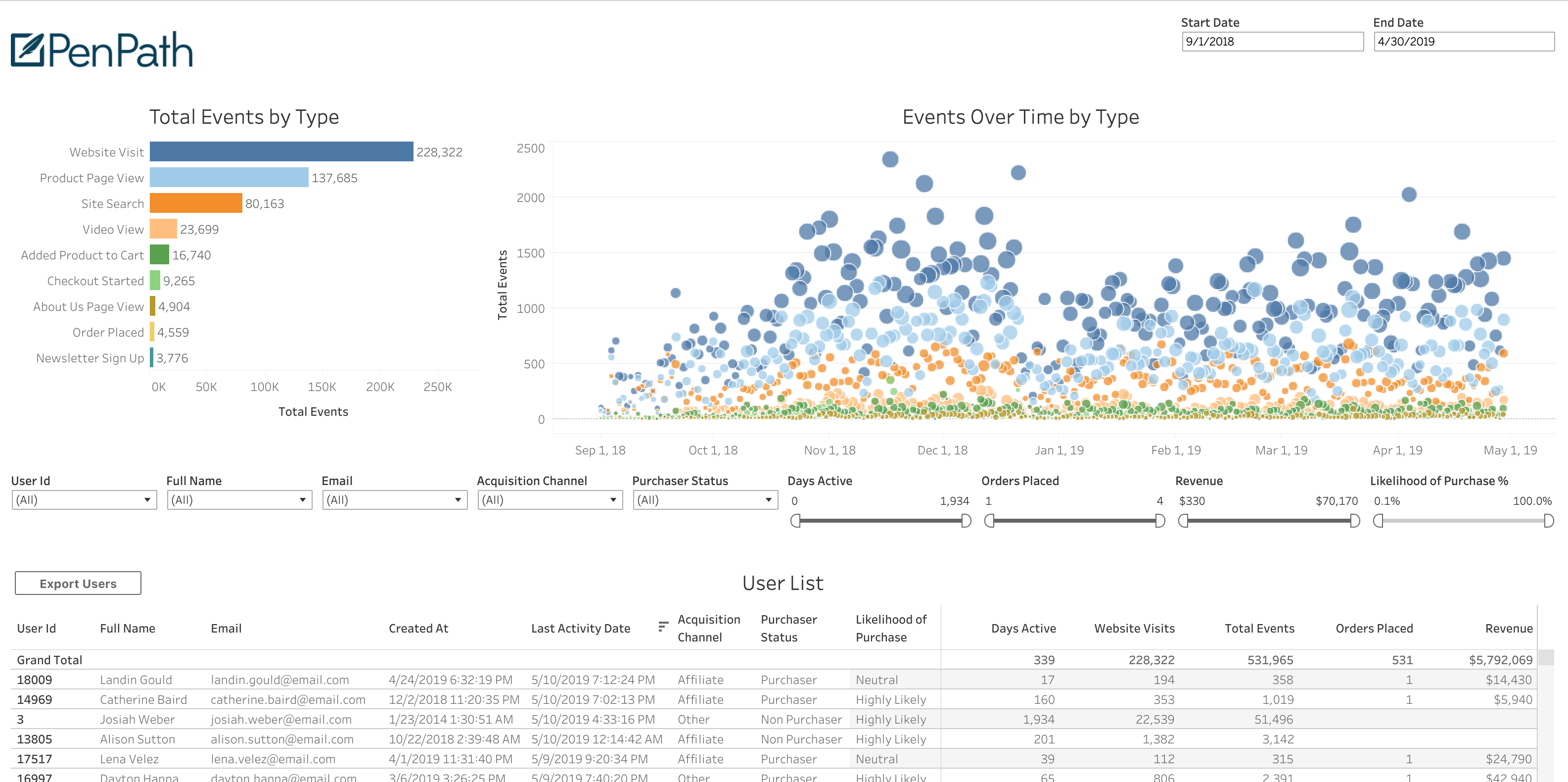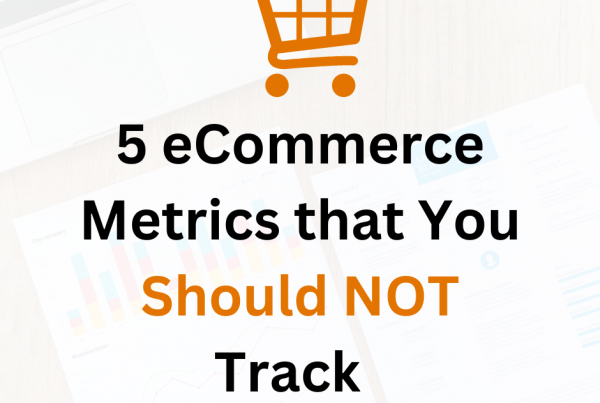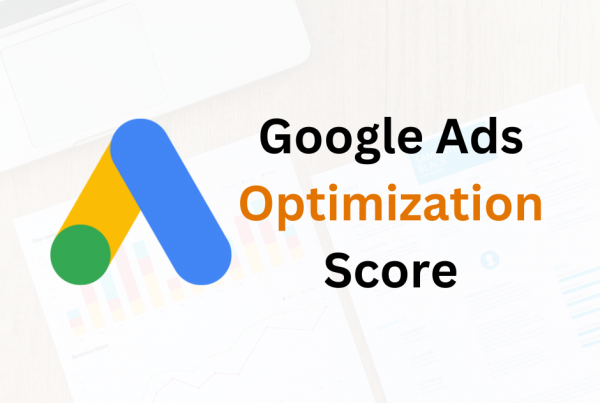Customers are the most important factor in a business’s success. After all, even if you have a tremendous product, it needs to sell to make your business successful.
Therefore, you want to focus on customers when doing business, which means you need one thing: data. Data is the singular most important factor in determining the success of a business. With data, you can make the proper decisions and understand what your customers want. And data is where e-commerce analytics comes into play.
What Is Ecommerce Analytics?
The basic principle of e-commerce analytics is gathering data, utilizing various tools to gain an understanding of user information and how all of that impacts your business.
Most e-commerce analytics deal with the same thing, which is onsite behavior, giving you information such as:
- Where your users come from
- How much time they spent on the site
- How much time they spent on various products
The use of e-commerce analytics is not limited to this narrow scope, providing almost limitless information if you are persistent enough. The metrics obtainable even include customer retention rates and how they go about spreading information about your site.
Why You Should Care
Ecommerce analytics are invaluable, giving you direct answers on what your users are doing and how you can improve the way your site runs.
For starters, the number of people shopping online is on the rise, expected to surpass 2.1 billion in 2021. This growth means more customers, which makes ecommerce analytics more impactful than ever. In addition, the industry is expected to increase in size vastly, nearly doubling to around 5.4 trillion dollars in the next year.
The key to success during this period will be understanding and reaching out to customers. While communicating and attracting customers has always been important, with more data at our fingertips than ever, ecommerce analytics stands out as a useful tool for businesses everywhere – the most critical tool.
The Key Components of Ecommerce
Ecommerce is a vast field, and a lot of what works for one business might not work for another. Therefore, the tools used will depend on the individual entity. However, certain components remain important no matter the methods. These components include:
- Gathering Information (Discovery)
- Acquiring Interest (Acquisition)
- Converting Interest Into Action (Conversion)
- Retaining Customers (Retention)
- Word of Mouth (Advocacy)
You start by gathering information so that you can make an informed decision. Afterward, you use that information to draw in customers. Once they are drawn in, you convert their interest into action. Then, you work to keep those customers. Lastly, you use those customers for referrals and future business.
Gathering Information – Discovery
The ultimate goal of ecommerce analytics is collecting data, but it is focused on customers. Mainly, it is focused on who your customers are. It is imperative to know the people that are buying from you, especially the repeat customers..
One place to start can be buyer personas, which is a deep profile of ideal customers for your business. It discusses a variety of data, which includes things like:
- Age Range
- Revenue
- Conversion Rate
You are looking to discover everything, from their lifestyles to their interests. While it might seem like a lot, it is a terrific way to help you understand and target the right group of people.
Acquiring the Data
Knowing your audience is something that tools like Google Analytics can help you with. In fact, they have an entire category dedicated to “Audience.” This category contains nine different subcategories that range from demographics to behavior. There are even custom settings.
More than that, Google Analytics is the analytics tool that most people use. Not only is it free, but it has a slew of features that are all relatively easy to use. This tool will ensure you a better understanding of your customers, with its analytics features displaying information about things such as:
- Performance
- Content
- Products
There is even an Enhanced Ecommerce plugin that allows you a more in-depth view of a customer’s activity, potentially allowing you insights that can help you improve your business. User behavior data is the first thing you can discover, which will display each step of the process, giving you knowledge about:
- Customers who view your product
- Customers who add your product to their cart
- Customers who initiate checkout
- Customers who finish the purchase
You can even discover where they gave up, helping you adjust your strategy accordingly. Additionally, product and marketing data is available, making it an incredibly useful tool for gathering data.
You can also combine data from Google Analytics with other sets of data. One useful tool is using information from competitors and seeing who they target. It might not always be possible, but getting an idea can be helpful.
Acquiring Interest – Acquisition
The next step is to use your data to acquire interest, pulling in new customers. The best way to do this is to use the data you have to market, investing your money where it will reach the most people and bring in the most customers.
While the ultimate goal is to turn as many visitors into customers as possible and improve your conversion rate, the first step is acquiring interest at all. Since acquisition is the attraction of customers, you can gauge it by visitors, and to increase the number of visitors, you need to use every tool available.
Of course, there are many tools out there that will get the job done, but a few stand out because of how easy they are to use and how effective they are. Among those are ads, SEO optimization, social media, and email.
Advertisements
Data can be used for a lot of different purposes, especially when you are dealing with acquiring interest and new customers. Of all the ways to go about using data, one of the best ways is to advertise, and the good news is, there are a lot of great ad channels out there, such as, for instance, Google Ads.
That being said, advertisements come in many different forms, but the goal of any ad is the same: to bring a lot of traffic to your site. Attracting customers is not always easy, but it is what the data is for. With the proper data, it becomes more obvious who you need to target and how. The same is true of other acquisition tools as well.
SEO Optimization
Search Engine Optimization (SEO) is less of a tool and more of a technique, but it is supported by tools. The goal is to make your website visible, and to do that, you need to have the proper keywords to rank highly.
However, you cannot simply type the word out over and over and expect results. The information must be helpful. It all has to make sense.
Fortunately, e-commerce analytics, and particularly Google Analytics, is capable of aiding you in your SEO efforts. Not only can it give you data about keywords and organic traffic, but it can dive deeper and help you figure out the nitty-gritty of it all.
Social Media and Email
While these are more complicated in the fact that they require some time and understanding, they can be incredibly useful. One of the reasons these methods are so useful is that there is a large number of people on the platforms, making it a great way to reach a broad audience in one place.
Ecommerce analytics can help here, giving you valuable data to target these two powerful tools. Whether it is an appealing post or an email list, these methods can help with acquisition immensely. After all, even though these methods can be highly effective, they can waste time and money if you aren’t informed and prepared.
For instance, understanding the group or groups you want to target within these massive platforms is critical to success. Understanding market fit and doing a detailed competitor analysis are also key, meaning you need to use all the data you have available to make things work.
Converting Interest Into Action – Conversion
Conversion has some of the more detailed metrics to consider. Mainly, it is due to the large number of reasons conversion might not happen. After all, conversion is a visitor turning into a buyer, which is bound to fail more often than not. A few metrics that discuss why a purchase didn’t happen are:
- Bounce Rate – the rate of customers who leave immediately after arrival
- Cart Abandonment Rate – the rate of customers who add to cart but don’t finish
- Product Page Conversion Rate – the rate of customers converted from the product page
These metrics help determine what the cause might be, and along with the website’s performance and their time spent browsing the site, you might have an easier understanding of why.
Site Health and Optimization
Regardless of why a visitor isn’t being converted into a customer, keeping the site healthy is important. Mainly, avoiding high percentages of bounce is vital. After all, something is seriously wrong if customers click and then immediately click away. Whether it’s poor site performance, displeasing aesthetics, or something else, it needs to be fixed.
That being said, what should you be aiming for? Well, since the bounce rate is determined by the number of people who visit the site and immediately navigate away, you want the number to be lower. Preferably, you want a bounce rate lower than 40% for it to be considered healthy.
One thing that can help with conversion and reduce bounce is a good landing page. It will also help you to:
- Appeal to the proper audience
- Engage the audience
- Promote action
From there, it all comes down to optimization, which basically requires nothing more than using data tools and data sets to make everything run as smoothly as possible. It might even mean optimizing certain sites for different platforms, such as mobile phones instead of PCs. Though, you might just consider both.
Metrics to Convert Interest Into Action
More often than not, converting visitors into buyers means having quality products marketed correctly. It also means understanding such metrics as:
- Number of Products
- Active Products
- Gross Margin
- Reviews
- Cart and Conversion Rates
All of it is important, but what it comes down to are the cart and conversion rates. It is important to know how many times a product is added to the cart, how many times it is removed, and how often it is actually purchased compared to the number of views.
Chances are, the cart and conversion rates will impact where you search for places to improve. If the number of products is low or the reviews are bad, it will have to be fixed. Otherwise, looking somewhere else might be helpful.
Retaining Customers – Retention
Making a good product can keep customers happy and loyal, but it might take more than that, and it will change based on the business and the target audience. However, one thing is for sure, which is that you should always be looking at metrics such as conversion and retention to figure out what is bringing customers in and what is causing them to stay.
Loyalty and happiness are also where you might need to branch out and look for specific tools to explore what is hurting your business. However, no matter what you do, you should always think about things from the perspective of the customer and make sure the entire operation is smooth and easy to use.
Simply put, no matter how well you use the data you collect, none of it will matter if customers are frustrated by the site or features involved.
A Few Methods for Retention
Keeping your existing customer base is extremely important, both for building a brand and maximizing profits. Therefore, targeting existing clients is a great way to improve the health of your business in the long-term. A few ways to do that include:
- Offer surprise packages or offers
- Improve existing bonds with customer feedback surveys
- Overdeliver on promises made (exceed expectations)
- Set customer expectations
You can also do things like automating parts of your marketing routine. While it might not be as effective as manually engaging customers, you can do it much easier and will see obvious results. There is even software out there to help.
There is also a need to improve Key Performance Indicators (KPIs). KPIs reflect how well a business is achieving the key objectives it faces, and using these, you can adjust accordingly to maximize retention. Additionally, you can automate part of this, combining manual tweaks with automated marketing to improve the most crucial aspects of your business.
Word of Mouth – Advocacy
Advocates are perhaps the most important customers you will have. Reviews and the words of others can make or break a business, and if you utilize your brand ambassadors properly, you will benefit greatly. And this doesn’t just include those that vouch for your product. You need to pay attention to those that are unsatisfied as well.
Using a net promoter score (NPS) can help you understand your customers and how willing they are to recommend your service or product to other people. In fact, it doesn’t just include happy customers. You will find information about:
- Those that are satisfied enough to speak out
- Those that are happy but not enough to recommend
- Those not happy with the potential to speak out negatively
Additionally, you can look at how many people are actively seeking information from your brand using things like newsletters or loyalty programs to get a better understanding of your brand advocacy.
In the end, advocacy comes down to satisfying customers to the extent that they repay your efforts.
Automation in All Things – Utilizing Dashboards
While everything mentioned above can be done manually, to an extent, that is highly inefficient. As mentioned with retention, automating parts of the process can be a vital way to accomplish more without needing to spend too much time on certain aspects.
One of the best uses for any dashboard is to customize the data you regularly see, making the most relevant data easy to find and interact with. The way this works is by removing the need to manually search for the same data day after day, having it update automatically as you continue to work on analysis and customer satisfaction.
You can expect quite a lot from using dashboards, but two of the most important aspects are:
- Dashboards minimize the chance of making a mistake
- With reporting time reduced, you can focus on analysis and using the data
There are many reasons to utilize dashboards and few reasons not to. By automating where you can, you can improve the overall value of your data by having more time to use it where it matters.
You can even enlist others to help you, such as PenPath. With PenPath, all of your data will be gathered and managed in one place, and you can get detailed analyses and customized dashboards to help you understand and grow your business. We will do it all for you, and your business will benefit tremendously.
Summary
Ecommerce analytics is a vast field, and there is no single way to go about gathering and utilizing the data involved. However, the general path is the same. Gather data, attract a large number of customers, convert as many as you can into buyers, do your best to maintain their business, and then seek to spread the word about your products.
It will take some effort, and things will change depending on the circumstances, but ecommerce analytics is incredibly important for any business. Besides, it never hurts to have a bit more data.







